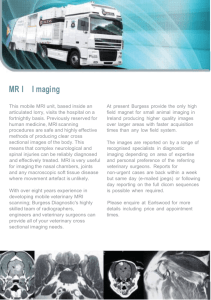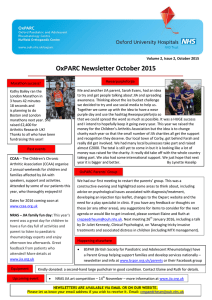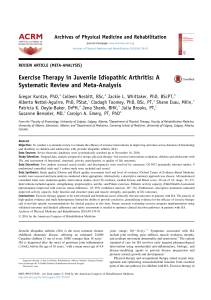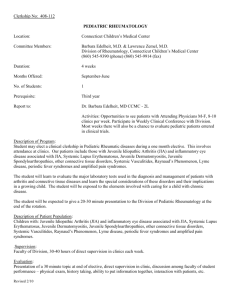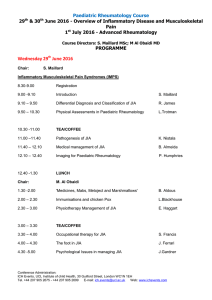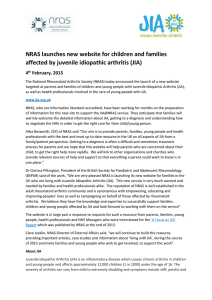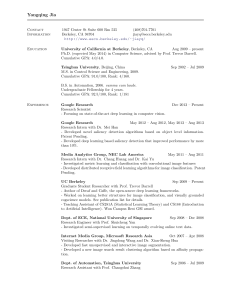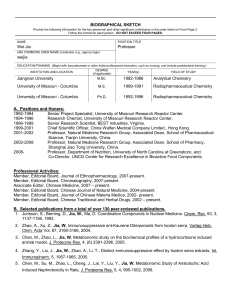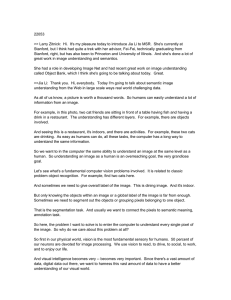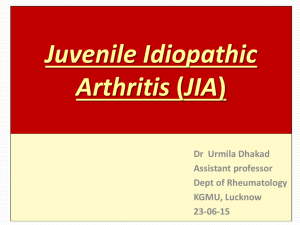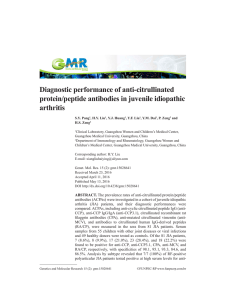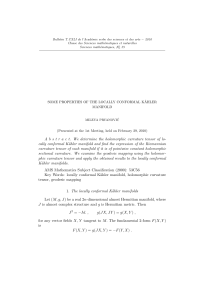Ultrasound for Diagnosis and for Guidance and Follow
advertisement
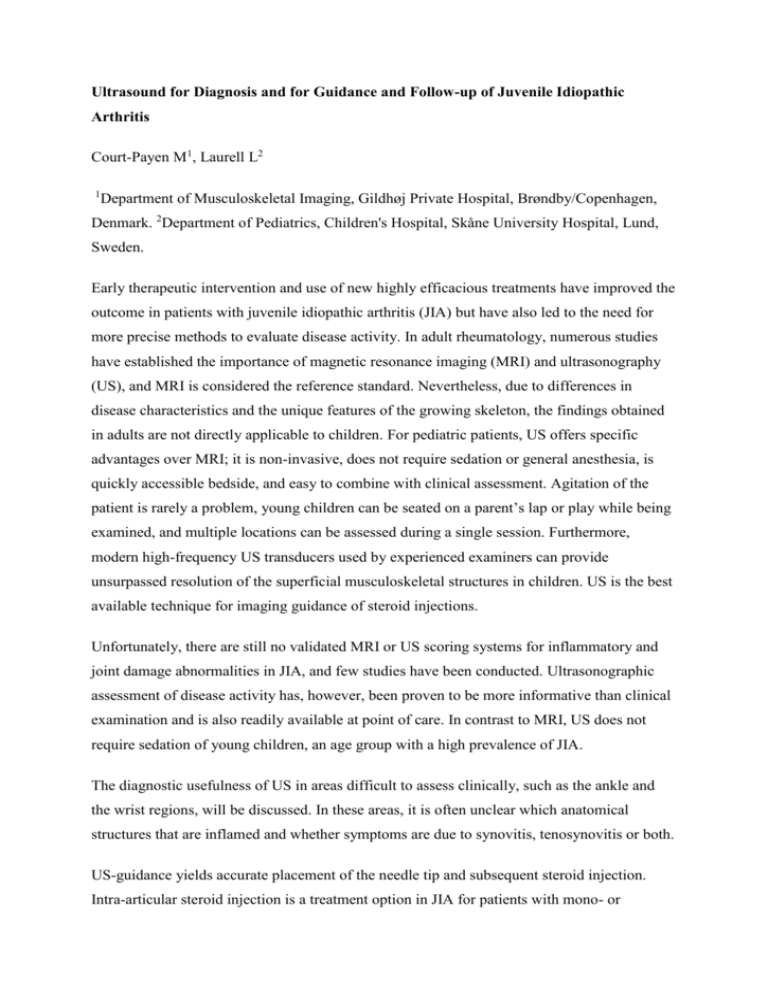
Ultrasound for Diagnosis and for Guidance and Follow-up of Juvenile Idiopathic Arthritis Court-Payen M1, Laurell L2 1 Department of Musculoskeletal Imaging, Gildhøj Private Hospital, Brøndby/Copenhagen, Denmark. 2Department of Pediatrics, Children's Hospital, Skåne University Hospital, Lund, Sweden. Early therapeutic intervention and use of new highly efficacious treatments have improved the outcome in patients with juvenile idiopathic arthritis (JIA) but have also led to the need for more precise methods to evaluate disease activity. In adult rheumatology, numerous studies have established the importance of magnetic resonance imaging (MRI) and ultrasonography (US), and MRI is considered the reference standard. Nevertheless, due to differences in disease characteristics and the unique features of the growing skeleton, the findings obtained in adults are not directly applicable to children. For pediatric patients, US offers specific advantages over MRI; it is non-invasive, does not require sedation or general anesthesia, is quickly accessible bedside, and easy to combine with clinical assessment. Agitation of the patient is rarely a problem, young children can be seated on a parent’s lap or play while being examined, and multiple locations can be assessed during a single session. Furthermore, modern high-frequency US transducers used by experienced examiners can provide unsurpassed resolution of the superficial musculoskeletal structures in children. US is the best available technique for imaging guidance of steroid injections. Unfortunately, there are still no validated MRI or US scoring systems for inflammatory and joint damage abnormalities in JIA, and few studies have been conducted. Ultrasonographic assessment of disease activity has, however, been proven to be more informative than clinical examination and is also readily available at point of care. In contrast to MRI, US does not require sedation of young children, an age group with a high prevalence of JIA. The diagnostic usefulness of US in areas difficult to assess clinically, such as the ankle and the wrist regions, will be discussed. In these areas, it is often unclear which anatomical structures that are inflamed and whether symptoms are due to synovitis, tenosynovitis or both. US-guidance yields accurate placement of the needle tip and subsequent steroid injection. Intra-articular steroid injection is a treatment option in JIA for patients with mono- or oligoarticular JIA but may also be used when a few joints remain actively inflamed during treatment with systemic disease-modifying drugs. Ankle injections, for example, are traditionally performed using palpable anatomic landmarks and have been shown to be poorer than injections at other sites. It appears that determination of true remission cannot rely solely on clinical examination, but requires repetitive imaging to confirm the absence of subclinical inflammation. Like in adult rheumatology, repetitive follow-up examinations with US and color Doppler examination is attractive because it is non-invasive and lacks ionizing radiation.





